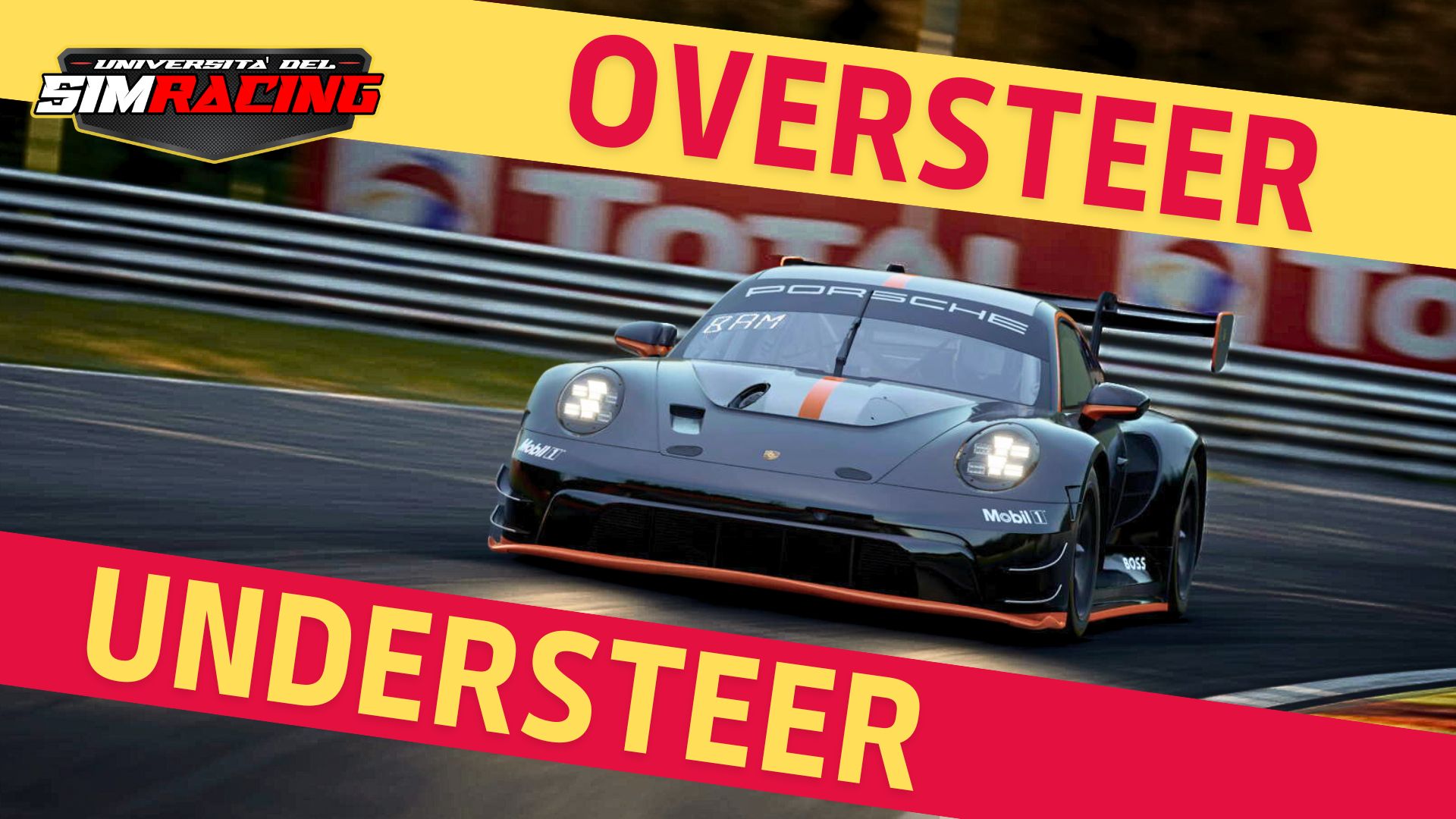Welcome to a new blog post by Setup and Telemetry Expert Massimo Zecchinelli, where we'll delve into Understeer and Oversteer in ACC
In this article, you’ll learn:
- What are Understeer and Oversteer?
- How are they generated?
- What types exist?
- How can you control, limit, or eliminate them to improve your driving feel?
Since this article is packed with content, let's dive right in!
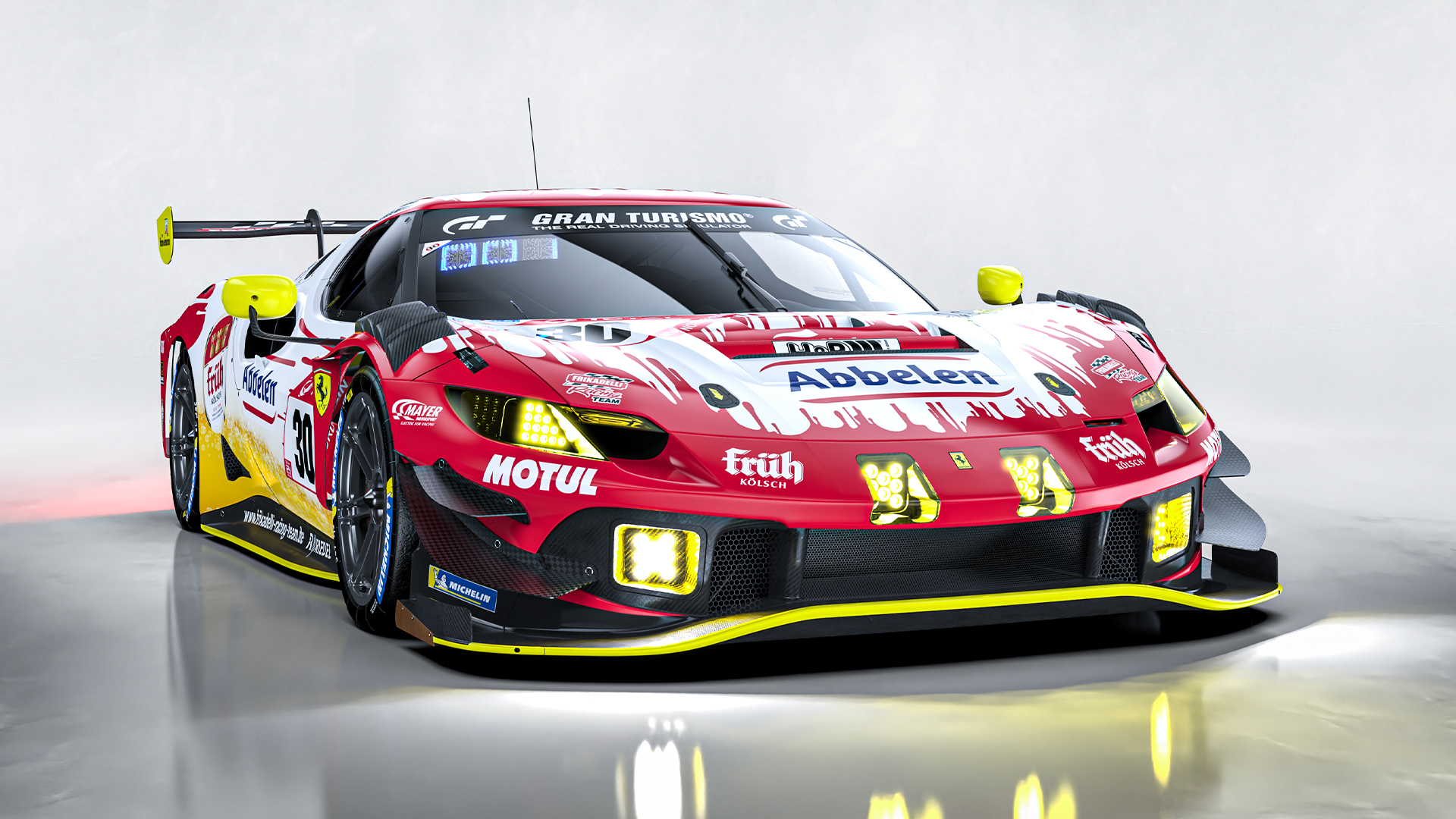
A fundamental key to driving a car at its maximum potential is managing its balance.
The term "balance" refers to the even distribution of vertical load across all four tires.
When the car is well-balanced, the grip of each tire is optimized, enhancing the car's control and allowing you to drive faster on the track.
During acceleration, the load shifts to the rear, causing the back of the car to squat.
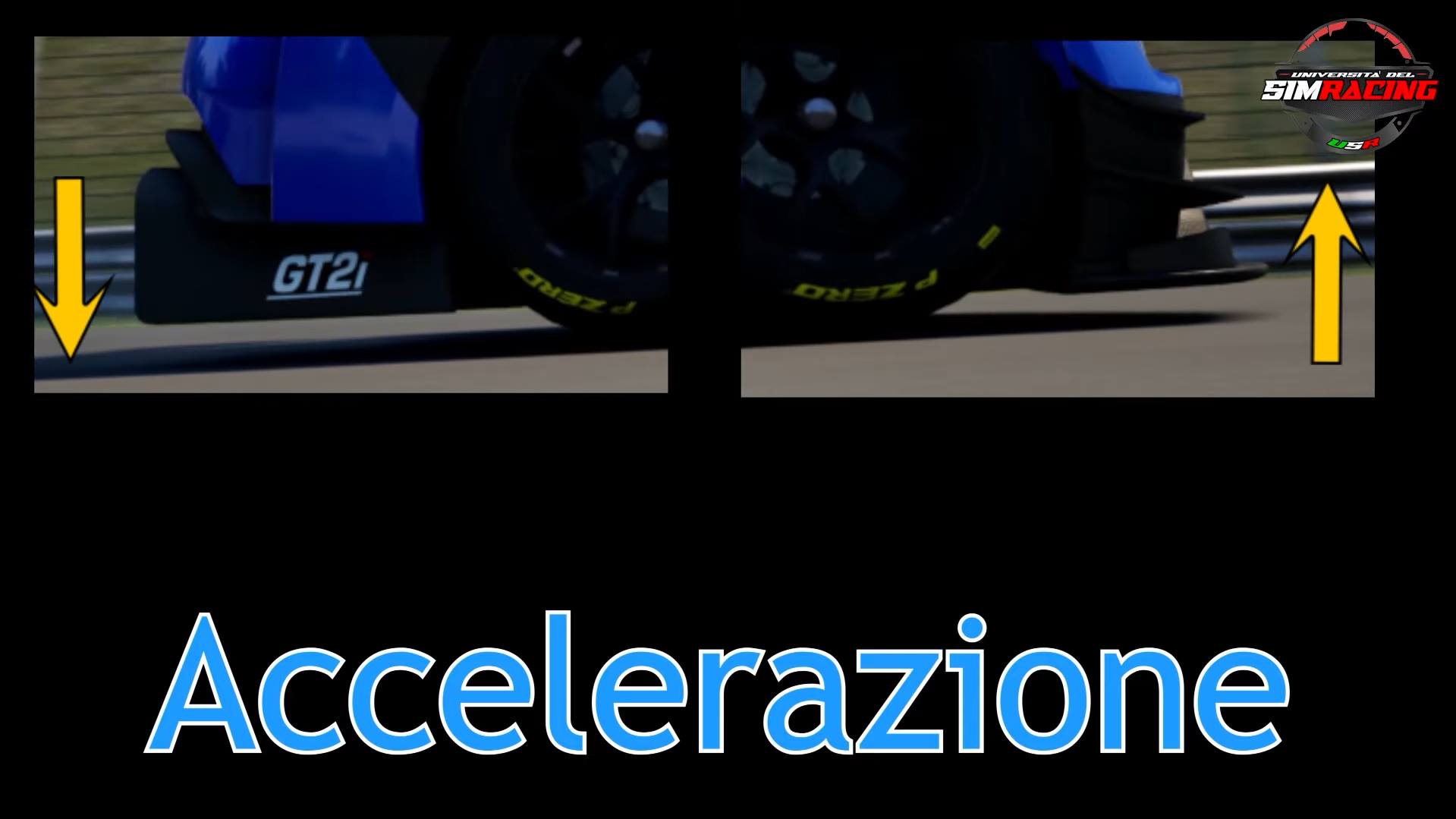
This load transfer increases the pressure on the rear tires, improving their grip and traction.
Conversely, during braking, the weight shifts to the front, causing the nose to dive and increasing the grip of the front tires.
In corners, the load transfers to the outer tires, which then bear more vertical load and thus more grip.
However, while this cornering load transfer increases grip on the outer tires, it reduces the overall grip of the car.
This phenomenon is known as "load sensitivity," which we will examine later.
It’s essential to learn how to control this phenomenon to exploit it to your advantage because the ability to manage load balance directly affects the car's handling and overall performance on the track.
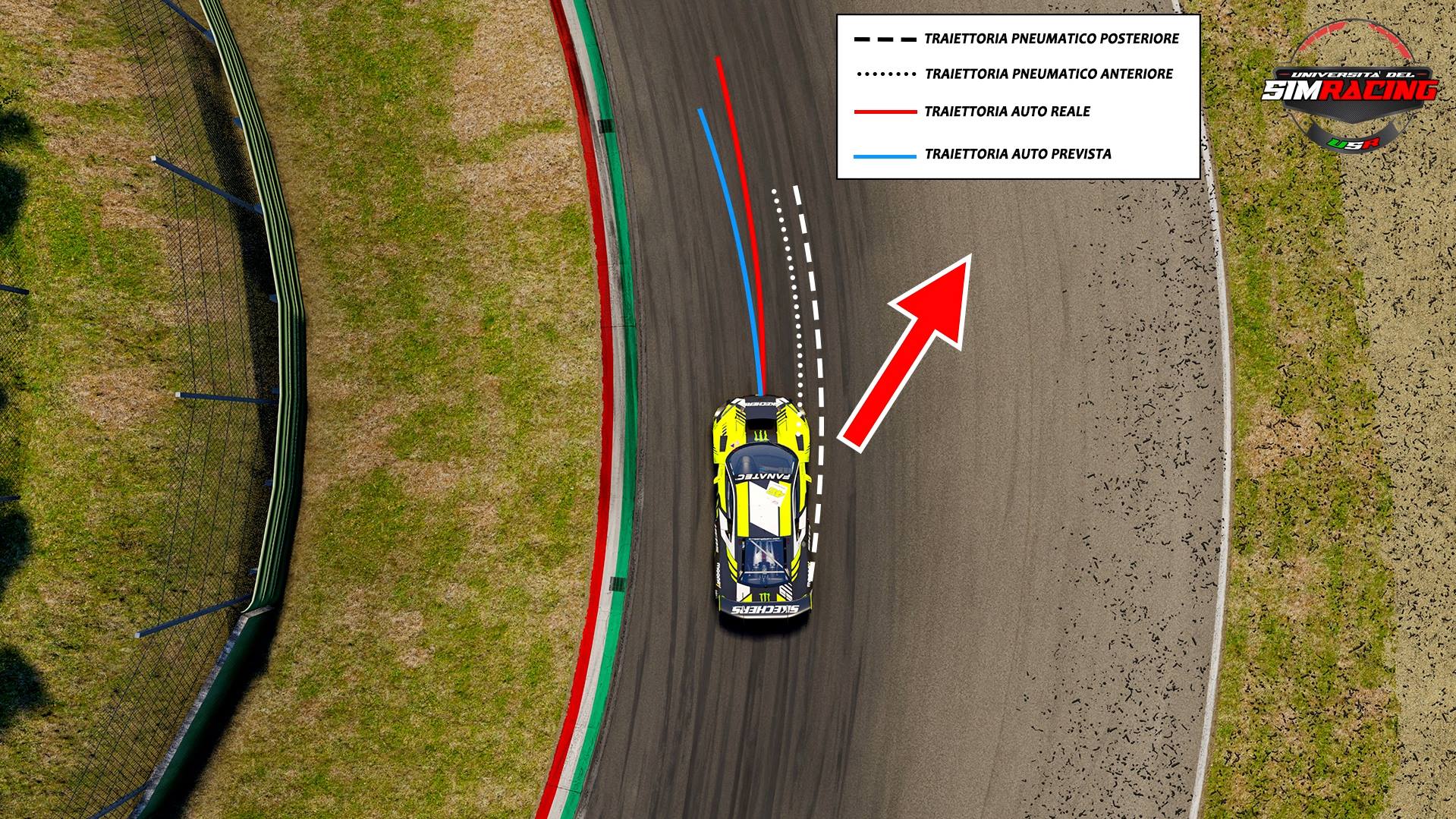
A balanced distribution reduces the risk of losing grip and allows for more even tire wear, extending their lifespan.
Beyond various setup adjustments, you can manage load transfer through driving techniques by always making smooth movements.
Abrupt movements of the steering wheel or pedals can cause sudden, uncontrolled shifts and variations in load.
Smooth driving with gradual movements helps maintain consistent balance.
Controlled steering, where you turn the wheel slowly and precisely, prevents excessive load transfer that can lead to loss of grip.

It’s important to avoid excessive steering inputs that can destabilize the car.
The same concept applies to braking and accelerating: gradual braking and accelerating are crucial.
Braking too harshly shifts the load forward, while rapid acceleration shifts it backward.
Both extremes can reduce tire grip and lead to general instability.

For example, during braking, gradually shifting the load to the front allows the front tires to better handle the additional load.
Slightly reducing speed before entering a corner can help maintain a more balanced load distribution.
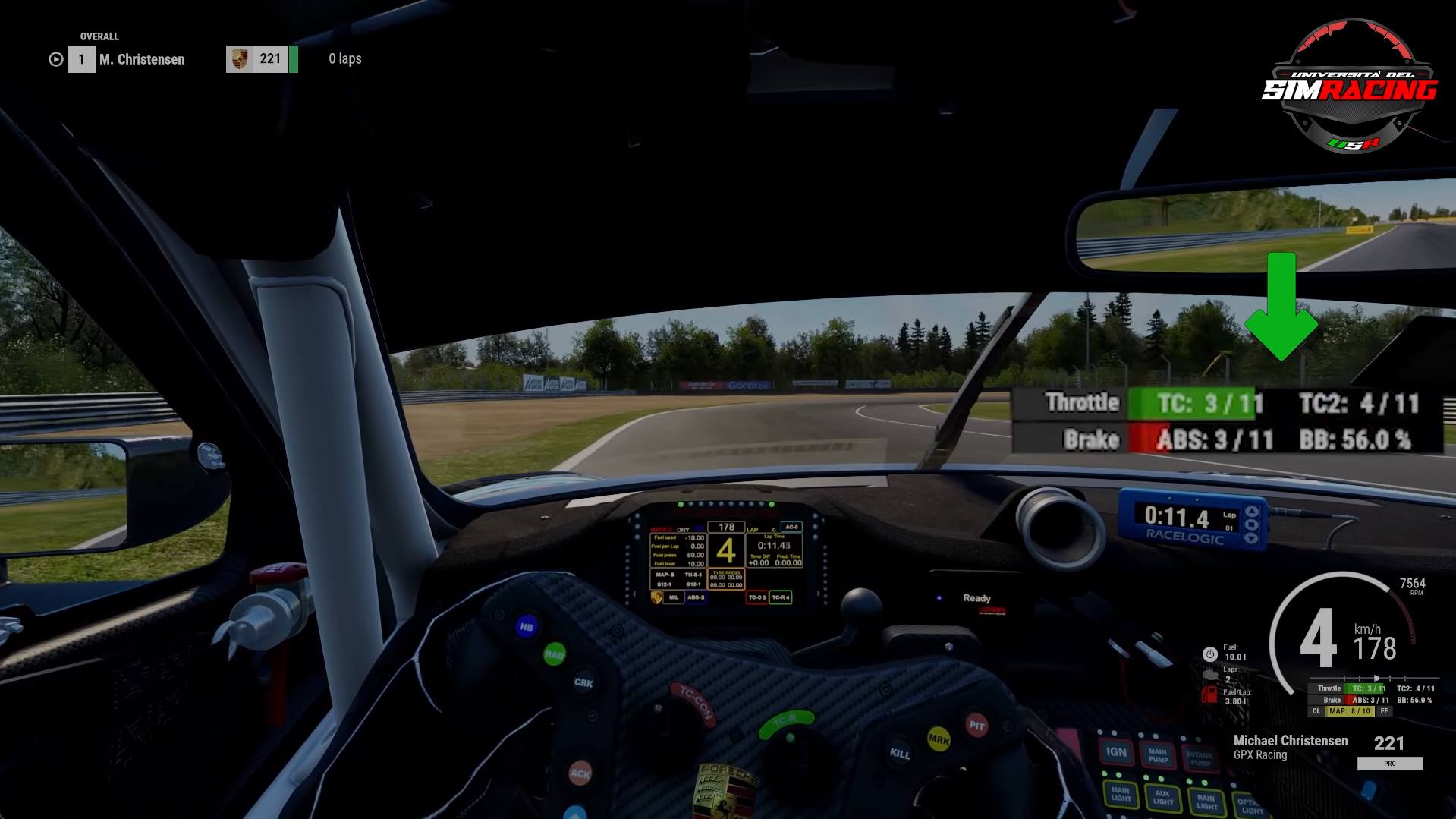
During acceleration, gradually increasing speed helps maintain stability and traction, transferring the load from the front to the rear without shocking the car.
It's impossible to drive a car, especially at the limit, without causing some load transfer.
Remember, the less load transfer that occurs, the greater the overall traction of the car.
Therefore, your goal is to apply smooth, controlled driving techniques to achieve maximum control.
You need to drive in a way that keeps the car’s weight evenly distributed across all four tires as much as possible.
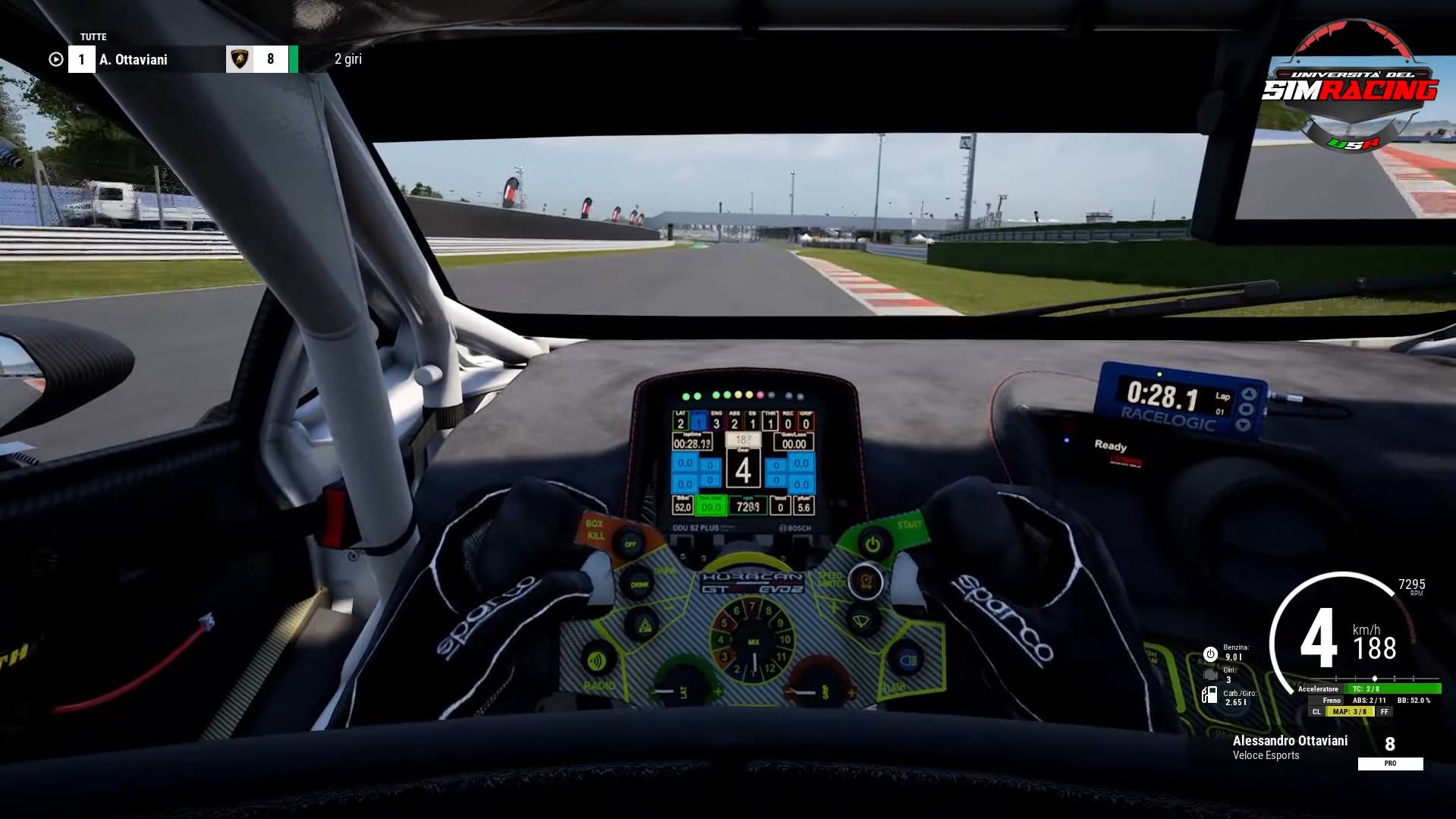
In other words, you need to be able to balance the car.
But what happens when you can’t?
Let’s find out together, starting with one of the most classic conditions: understeer.
Understeer is a driving condition where the front tires lose traction relative to the rear tires.
In this situation, the car tends to go straight, not responding adequately to steering inputs, and heads towards the outside of the corner.
This phenomenon, which occurs when the car does not follow the direction set by the steering wheel, effectively widens the curve’s radius.
One of the main causes of understeer is excessive speed on corner entry, which forces the driver to overload the front tires in braking, pushing them beyond their grip limit.

But a jerky or too abrupt acceleration during the traction phase can also cause this behavior, excessively shifting the weight to the rear of the car and reducing front tire traction.
The instinctive reaction of many drivers to understeer is to turn the wheel further.
However, this action is highly counterproductive when the front tires are sliding, meaning they’ve lost grip with the road surface and cannot maintain the desired direction.
In practice, the front tires slide sideways relative to the direction in which the wheel is turned.
To correct understeer, the recommended strategy is to reduce the steering angle to re-establish optimal tire contact with the track.
Alternatively, you can ease off the accelerator, gradually releasing the gas pedal allows weight to transfer back to the front, increasing front wheel traction.
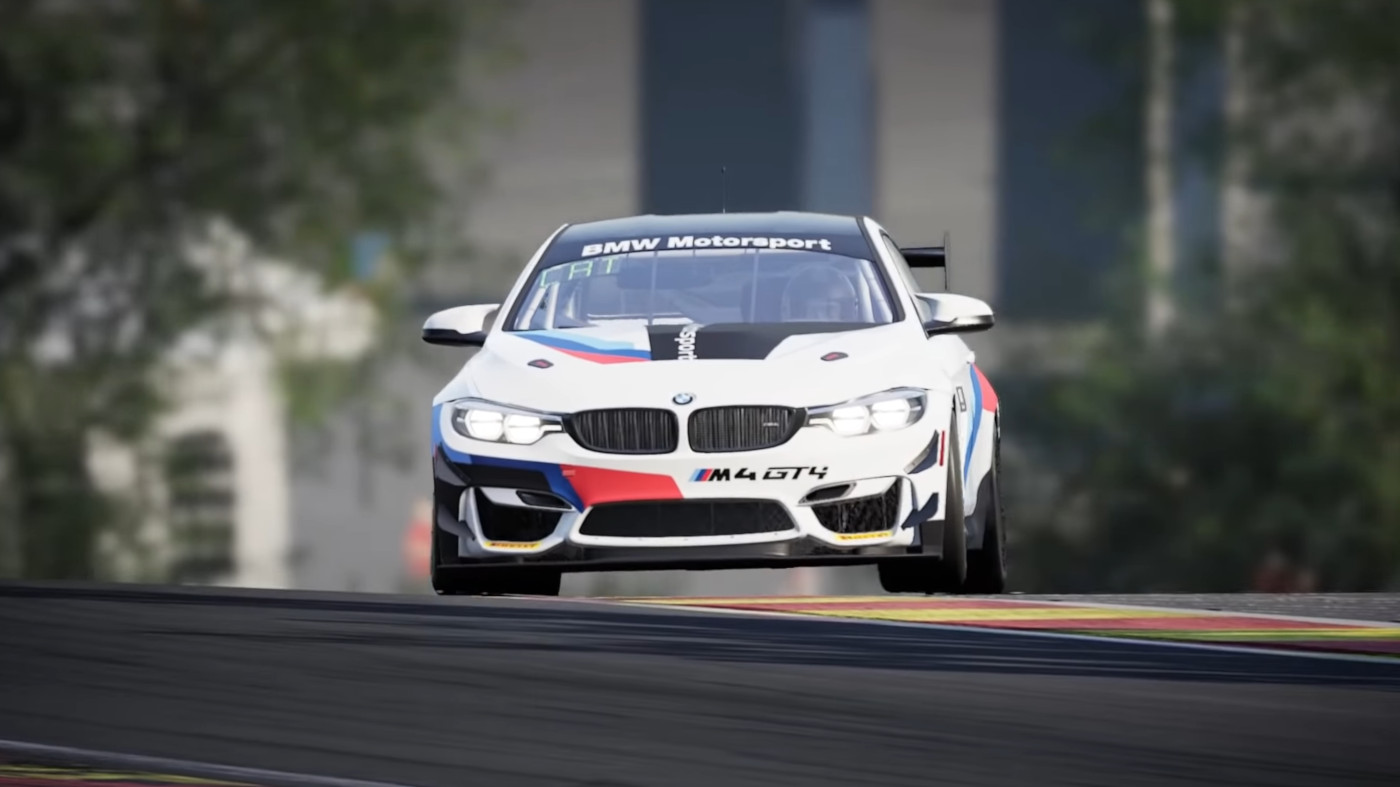
Oversteer occurs when the rear wheels lose traction relative to the front wheels.
This condition causes the rear of the car to slide outward while the front end turns into the corner.
As a result, the car rotates beyond the desired angle, reducing the corner's radius.
One of the main causes of oversteer is "trail throttle," which happens when you release the accelerator while cornering or enter the corner with excessive braking.
Both actions shift the car’s weight forward, lightening the rear and reducing rear tire traction.

Another scenario is power oversteer, which occurs in rear-wheel-drive cars when accelerating too aggressively.
For this case, the available grip of the rear tires is almost entirely consumed by acceleration, leaving little or no grip for cornering.
In trail throttle oversteer, the key is delicate throttle control: instead of braking or decelerating abruptly, you need to ease the throttle gradually to help redistribute the load to the rear, improving rear tire grip.
In power oversteer, if you find yourself in an oversteer situation during intense acceleration, it’s important to gently release the throttle.
This reduces the load on the rear tires, allowing you to regain control.
In certain conditions, oversteer can also be exploited to tackle corners more effectively: by looking and steering in the desired direction, you can use oversteer to guide the car more precisely.
At the same time, by carefully modulating the throttle, you can achieve a better balance between the front and rear wheels.
It’s crucial to avoid sudden decelerations or intense braking during oversteer, as these actions can worsen rear traction loss and potentially cause a spin.
Careful and gradual management of oversteer is essential to maintain vehicle control.
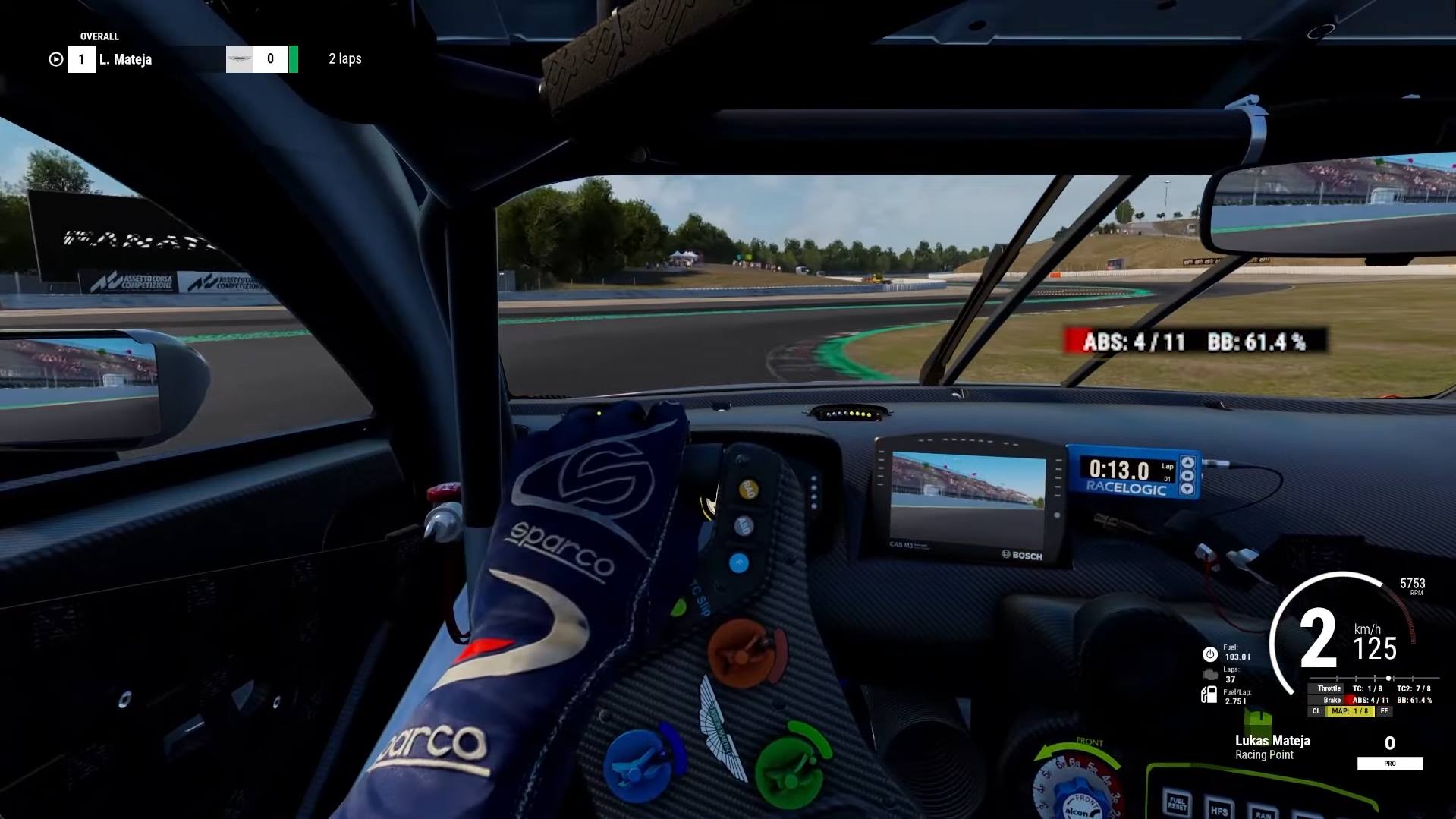
After examining how to correctly use driving techniques to resolve balance and load distribution issues, we now focus on the load transfer that occurs in corners, specifically lateral load transfer.
The term "take a set" describes the moment when a car has completed its load transfer during a corner.
When all the load that needed to be redistributed due to the maneuver has been effectively transferred.
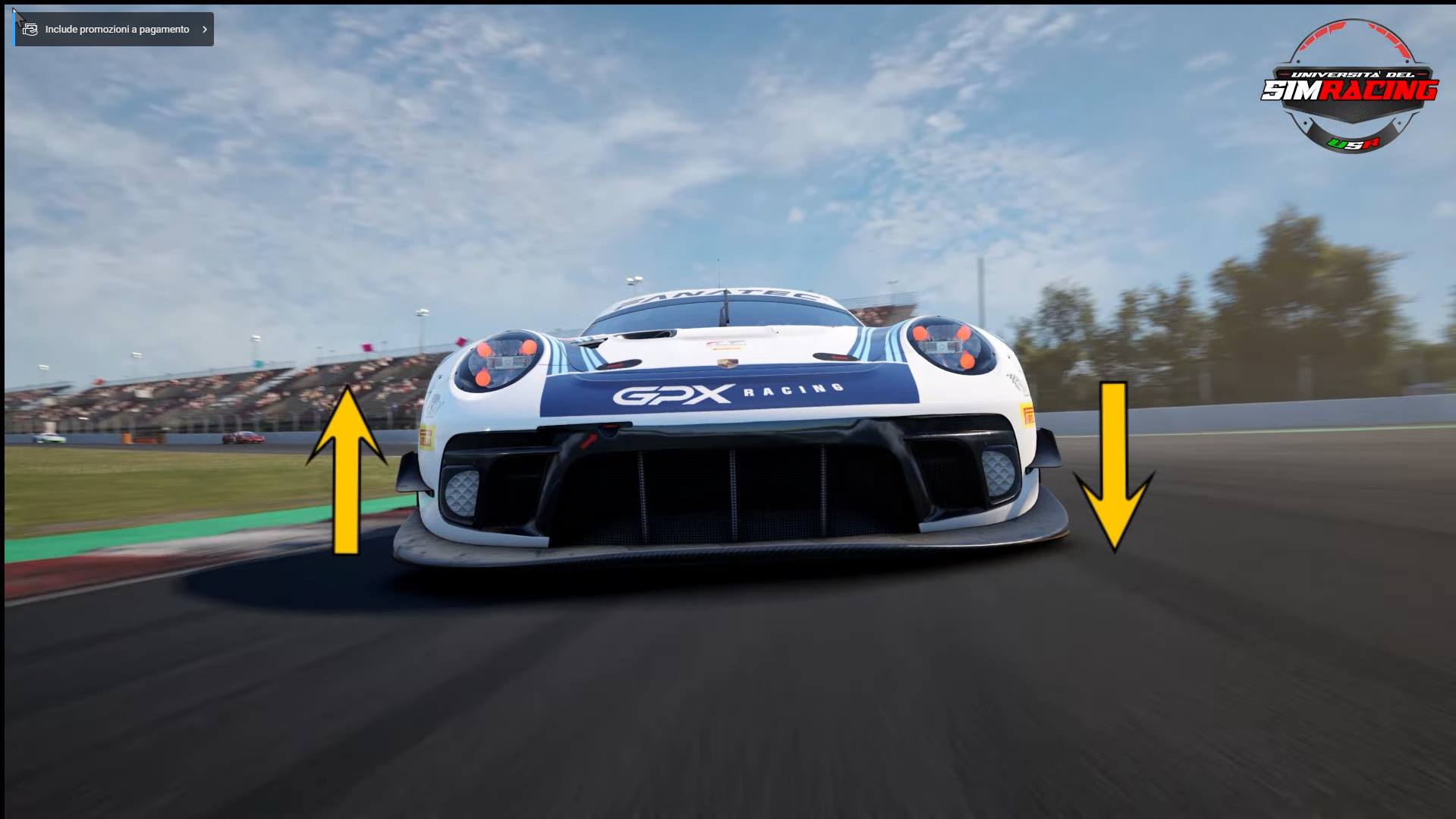
In the initial phase of the corner, when the driver starts to turn the wheel, the car begins to react.
This phase involves an initial load transfer of the car, the adaptation of the tires to the new direction, and the suspension components' reaction to the change in trajectory.
The "take a set" occurs right after this initial reaction: the suspension compresses and settles into a stable state where the load distribution is balanced for the specific corner.
It involves the tires in contact with the track, the suspension absorbing forces, and the car reaching a state of equilibrium where neither understeer (front tires losing grip) nor oversteer (rear tires losing grip) occurs.
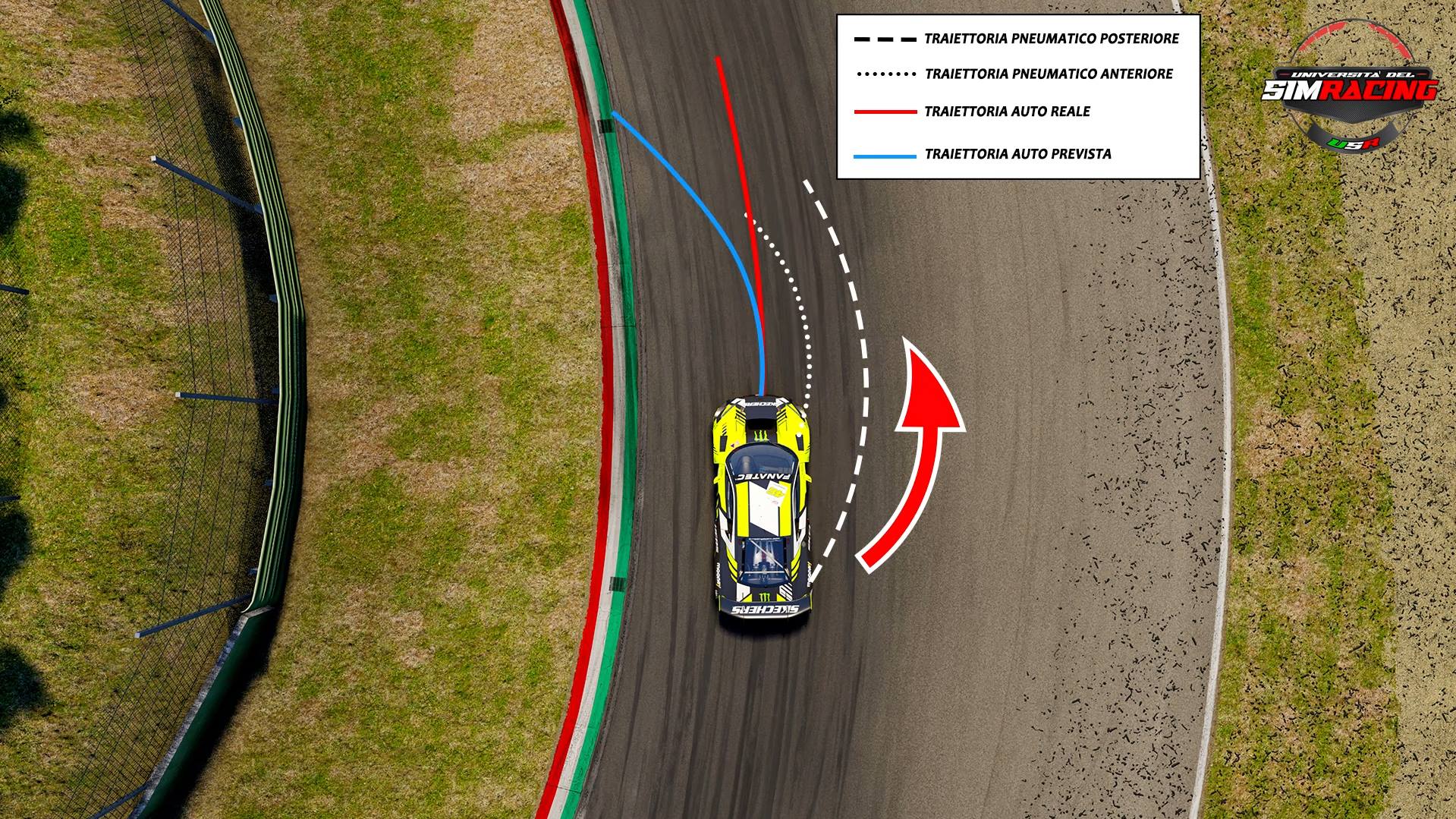
The speed at which the car takes a set in a corner is influenced primarily by two factors: suspension and damper settings and driving style.
A quick and efficient load transfer allows the car to stabilize faster, enabling the driver to push the car to its limits more quickly and confidently.
If the load does not transfer quickly enough, you risk spending too much time in a transitional phase, making it difficult to understand and exploit the actual grip limit.
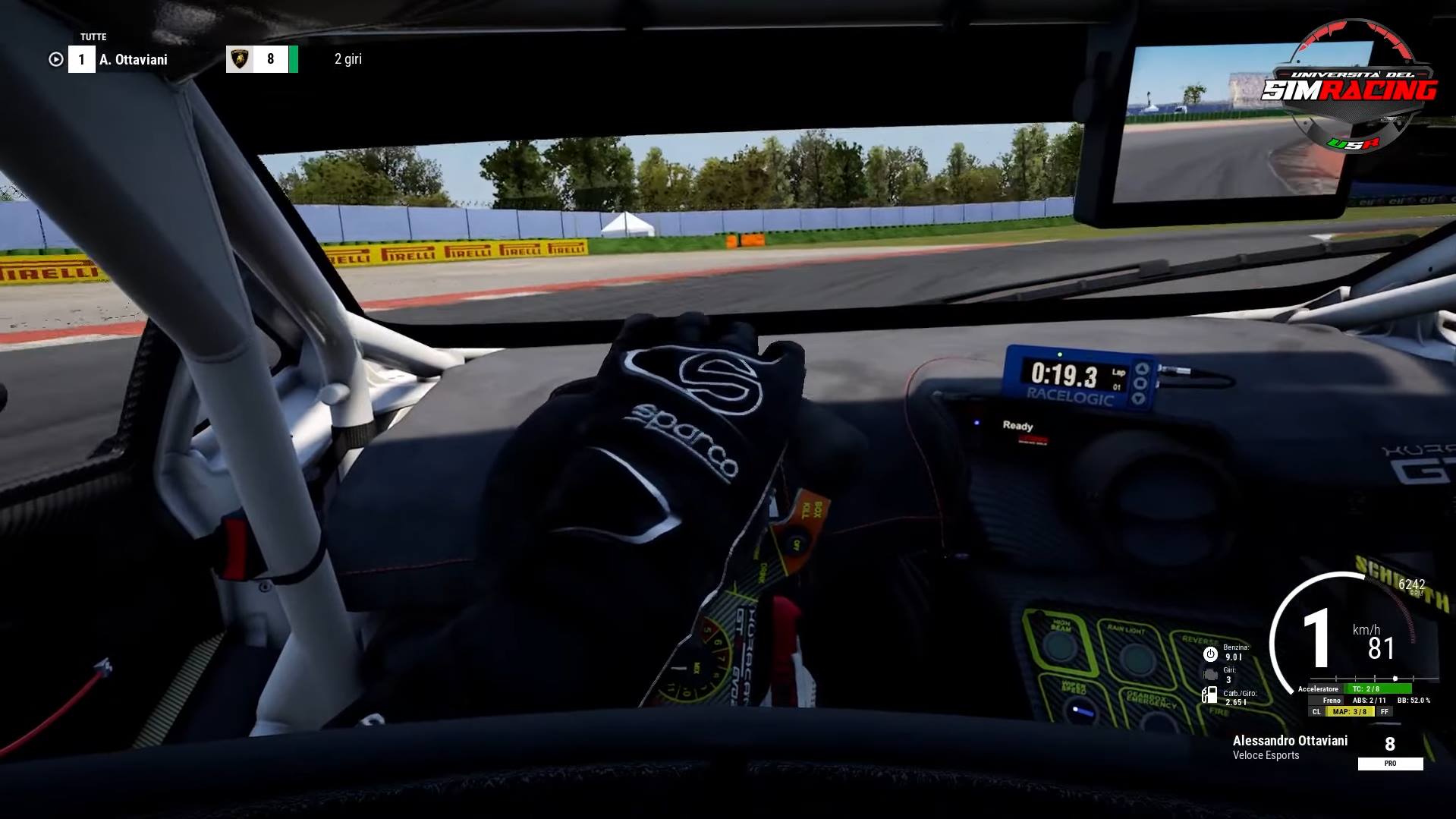
Earlier, we introduced the concept of "load sensitivity," which refers to the sensitivity to load.
It’s the physical law that as the vertical load on a tire increases, the friction coefficient of that particular tire decreases.
This applies to both lateral and longitudinal load transfers.
So, you still get more grip, but proportionally less.
For example, at 300 kg of vertical load on a tire, let’s assume the friction coefficient is 1.30.
Multiplying the two numbers gives us the friction force provided by the tire: 300 * 1.30 = 390 kg for each tire.
If we have an axle perfectly balanced with each tire supporting a load of 390 kg, the total available grip on that axle will increase on the outer tires and decrease on the inner tires.

Continuing with the example, suppose due to lateral load transfer, the vertical load on the left tire becomes 400 kg while on the right tire it becomes 200 kg.
At this point, the coefficient on the left tire decreases from 1.30 to 1.22, while on the right tire it increases from 1.30 to 1.38.
So, 400 kg * 1.22 = 488 kg of load on the left tire and 200 kg * 1.38 = 276 kg of load on the right tire.
Adding 488 kg + 276 kg gives us 764 kg as the new total axle load.
So, while the total load on the axle remains the same (600 kg), the total available grip is now only 764 kg instead of the original 780 kg.
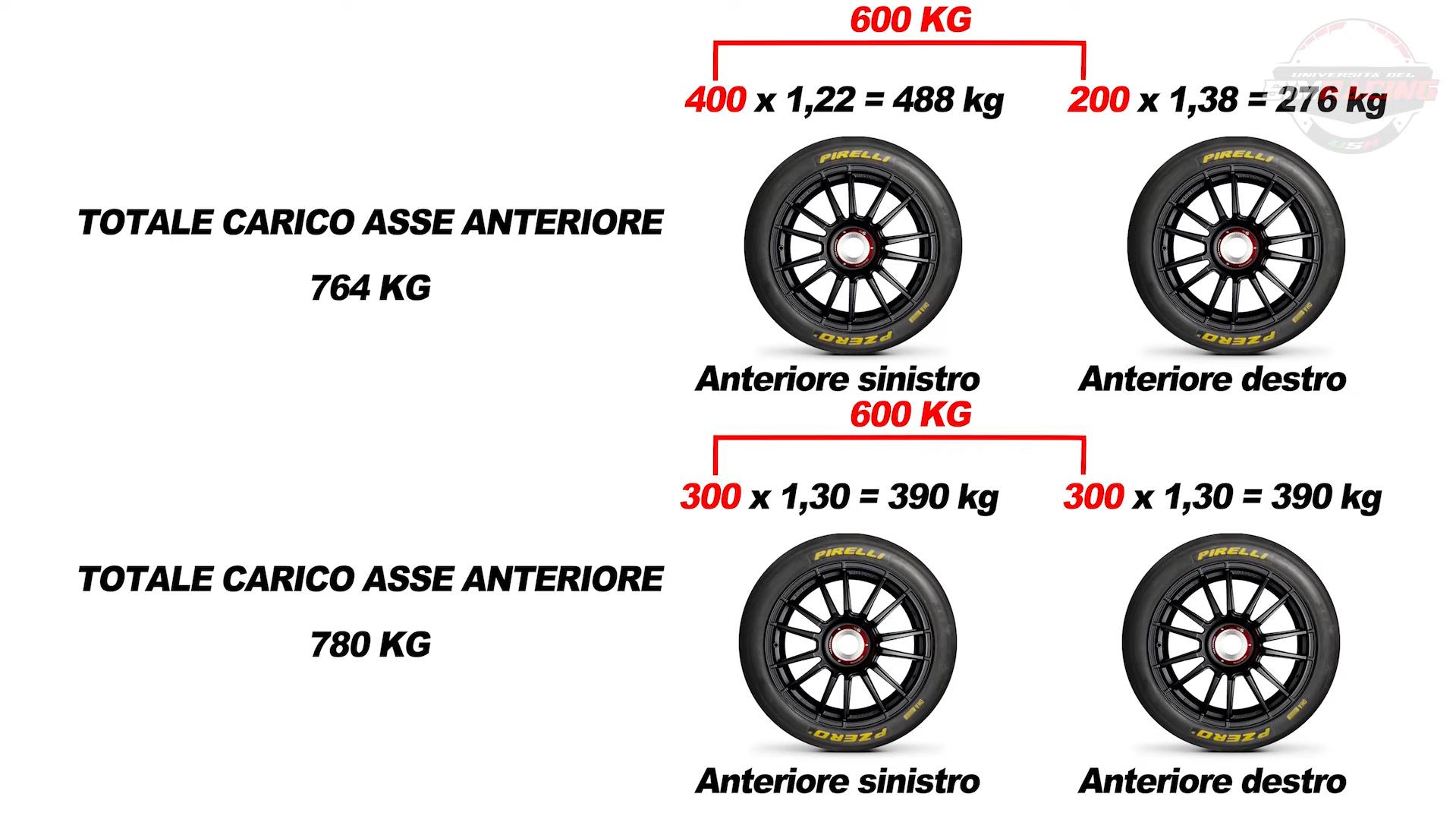
In essence, the more load transfer there is in a corner, the more vertical load we add to the outer tires, but the less total car grip we obtain.
If the load transfer is greater at the front, understeer will occur because that axle will reach its limit first.
Conversely, if it happens at the rear, oversteer will occur because the rear axle will reach its limit and lose grip first.
Now you understand why smooth driving is crucial.
Abrupt or uncontrolled movements causing irregular, excessive, and discontinuous weight transfer in corners prevent the car from stabilizing properly.
This makes it extremely difficult to maintain driving at the limit, as the limit itself is constantly changing.
Excessive weight transfer caused, for example, by overly aggressive steering, can lead to a reduction in overall grip.
The goal is to achieve stability in the corner as quickly as possible, without exceeding the necessary load transfer.
This translates into controlled, precise, and conscious movements of the driving controls, the steering wheel and the brake and accelerator pedals.

Regarding car balance, one last aspect not to be underestimated is the dynamic balance of the car.
By dynamic balance, we mean that very few cars have a perfect 50/50 weight distribution between the front and rear.
One such example is the BMW M6 GT3.

Most race cars are specifically designed and built with a mid-rear engine, with a weight distribution ranging from 40-45% at the front and 55-60% at the rear.
By thoroughly understanding the weight distribution of the car being driven, a driver must compensate by controlling load transfer to balance the car’s behavior, making it as neutral as possible.
To do this, they might need to control the weight transfer so that statically there would be more weight at the front or rear, but dynamically the car is perfectly balanced.
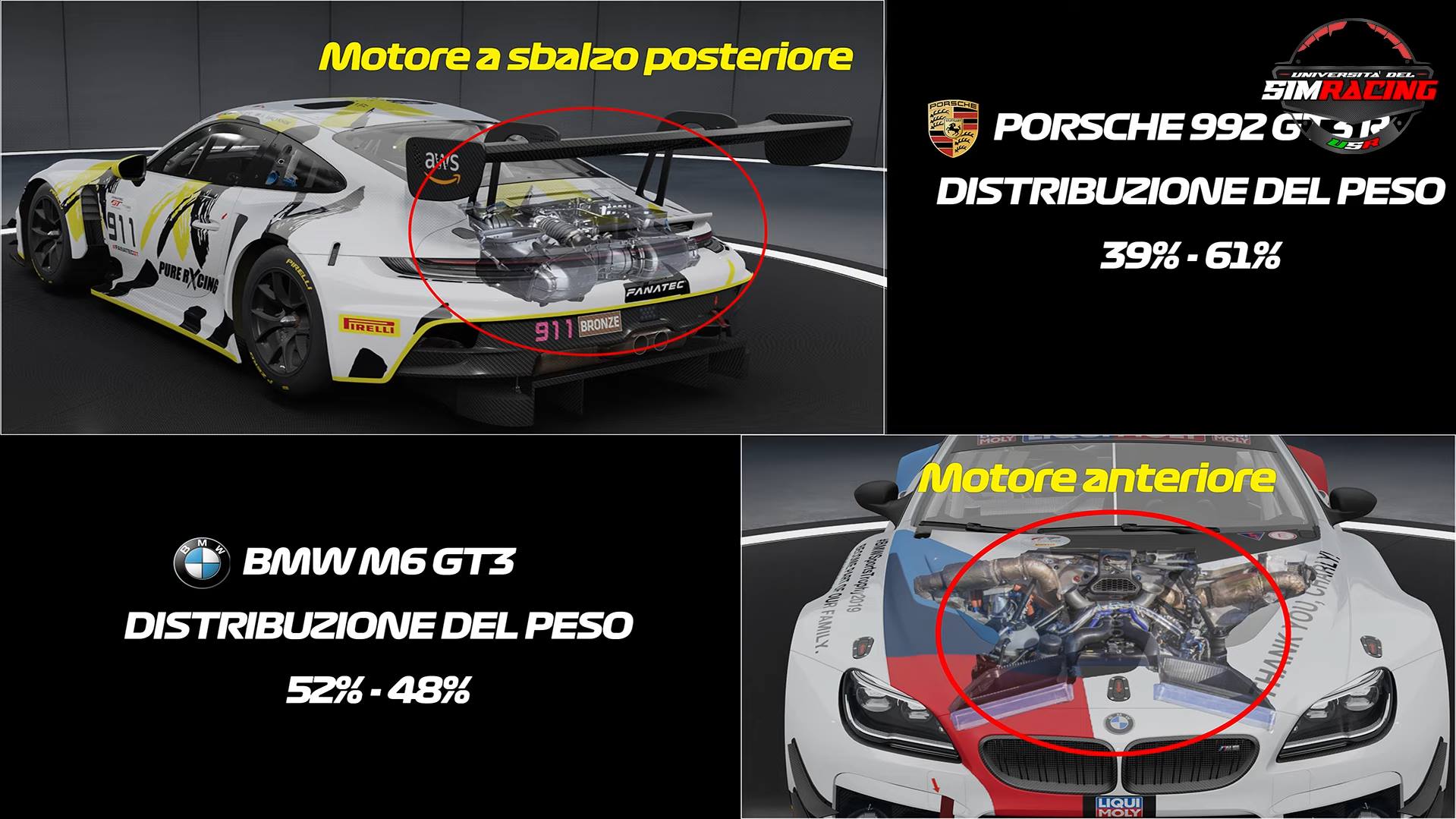
Suppose the static or resting weight distribution of your car is 40% front and 60% rear, making it inherently oversteering.
While driving a corner at 150 km/h, you know you could go faster if the car oversteered less, that is, if it had a more neutral behavior.
To reduce the car’s oversteer, you should therefore transfer some aerodynamic load to the rear by pressing the accelerator.
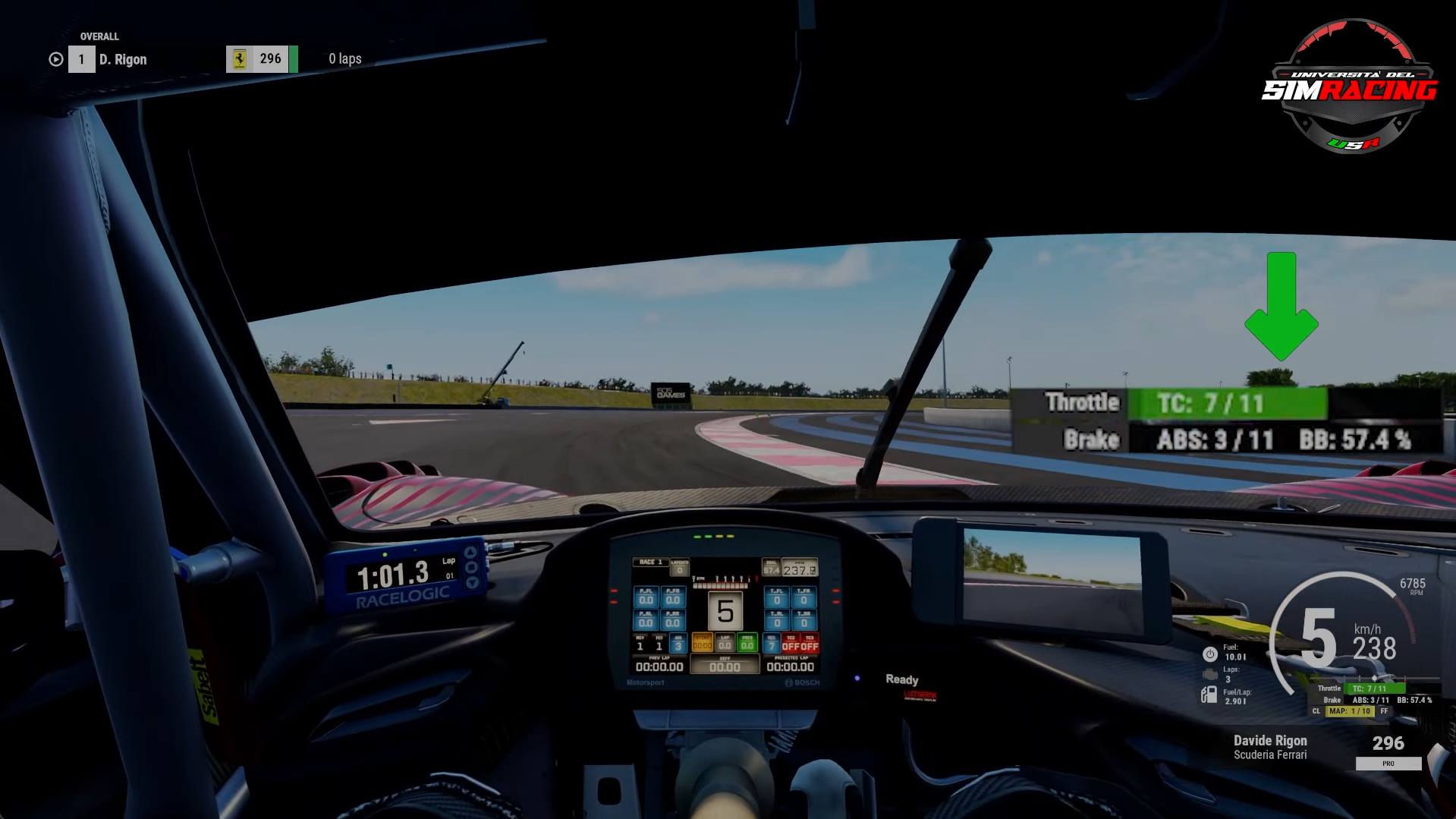
This would change the weight distribution to about 35% front and 65% rear in a high-speed corner, making the car dynamically balanced.
Cars with more rear weight distribution have inherent instability due to design, making them prone to oversteer, especially during deceleration.
This makes inducing oversteer easier but recovering from it harder than with a vehicle with more front weight distribution.
So, in the case of aggressive acceleration, the reduction in weight on the front wheels due to load transfer will mean less grip, producing an understeer tendency when exiting a corner.

We’ve reached the end of this article, where you’ve discovered valuable information to help you on your journey in Assetto Corsa Competizione.
Keep reading USR blog articles by clicking the button below:
See you soon!
